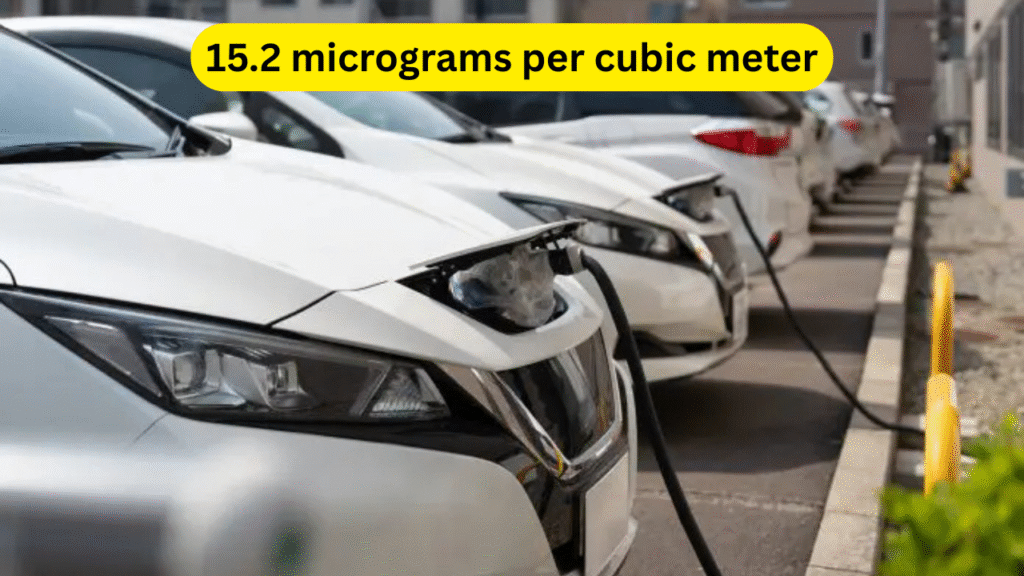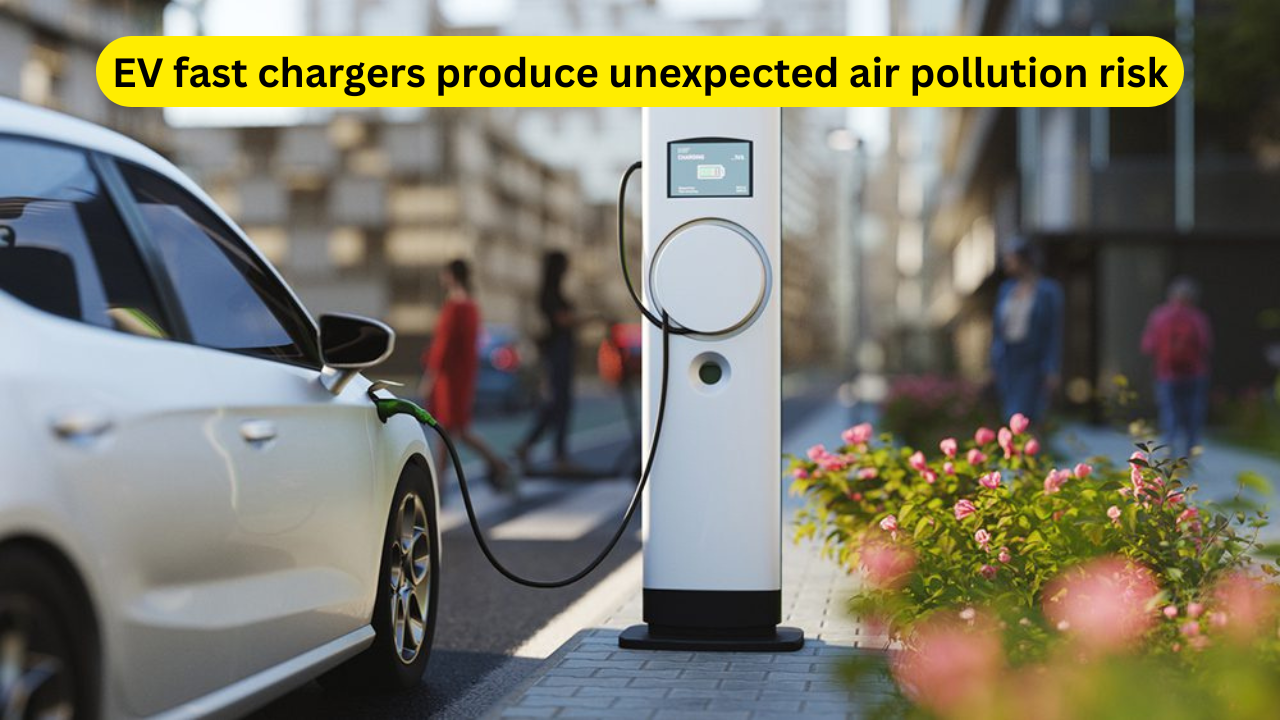Shocking Study: Electric vehicles (EVs) are widely celebrated for their role in reducing tailpipe emissions and cutting urban smog. But a new study reveals a surprising twist — fast-charging stations themselves may be releasing particulate pollution into the air, raising fresh concerns about the environmental trade-offs of large-scale EV adoption.
UCLA Study Uncovers a Hidden Risk
Researchers from UCLA, in a peer-reviewed study published in ScienceDirect, analyzed 50 high-speed EV charging stations across Los Angeles County, including several Tesla Supercharger sites. They found that nearly half of the stations recorded particulate matter levels above World Health Organization (WHO) safety guidelines.
On average, the fine particulate matter (PM2.5) concentration measured 15.2 micrograms per cubic meter, slightly higher than levels at gas stations — a surprising outcome, considering EVs are marketed as the “cleaner” alternative.
The study traced the source of pollution to fans inside charging equipment, which disperse dust, tire fragments, and brake particles into the surrounding air.
Rapid Growth of High-Speed Chargers in the U.S.
The findings come at a critical time. According to U.S. Department of Energy data, the country now operates 11,400 direct current (DC) fast-charging stations, with 703 added in just the second quarter of 2025. Hundreds more are expected before year-end as federal and private initiatives ramp up EV infrastructure.
Experts caution that while these emissions are significantly lower than those from gas stations, unaddressed equipment-related pollution could undermine EVs’ environmental credibility.

Also read: Ola Electric Stuns Market with ₹5 Lakh Diamondhead EV Motorcycle, Global Expansion in Sight
Industry and Expert Responses
Yuan Yao, a UCLA postdoctoral researcher and co-author of the study, emphasized that the objective is not to stall EV growth but to ensure “clean adoption.” She recommended installing filtration systems, as well as careful placement of charging sites, avoiding sensitive areas like schools, hospitals, and dense residential neighborhoods.
Charging companies have already taken notice. ChargePoint, the largest EV charging network in the U.S., stated that its DC fast chargers are designed with minimum air intake and exhaust heights to limit dust dispersal. The company also announced plans to integrate additional air filters into future units.
EV vs Gas Stations: The Bigger Picture
Despite these findings, experts stress that gasoline-powered vehicles remain far more harmful. Traditional fueling stations expose users and nearby communities to toxic volatile organic compounds (VOCs) such as benzene, alongside significantly higher particulate matter from tailpipe emissions.
In comparison, EV chargers emit only small fractions of the pollutants linked to internal combustion engines. Still, the new data highlights that zero-emission driving doesn’t mean zero-impact infrastructure.
Striking the Balance
As EV adoption accelerates, the challenge lies in balancing convenience, charging speed, and air quality. Researchers argue that simple interventions — like adding filters, redesigning fan systems, and better siting of charging hubs — can make a measurable difference.
The study serves as a timely reminder: while EVs are crucial for the clean energy transition, the supporting infrastructure must also evolve sustainably. Without proactive measures, the industry risks creating unexpected pollution hotspots in the very places meant to promote a greener future.


1 thought on “Shocking Study: EV Fast Chargers Found to Create Hidden Air Pollution Risk”